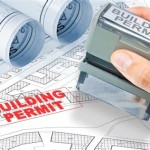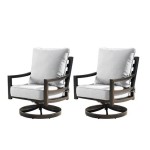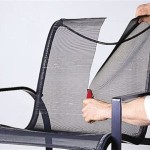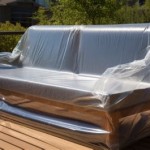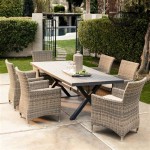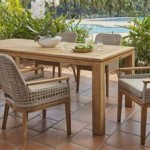Plastic Patio Furniture: What You Need to Know
Plastic patio furniture has become a ubiquitous presence in outdoor living spaces across the globe. Its popularity stems from a confluence of factors, including affordability, durability, and versatility. However, not all plastic patio furniture is created equal. Understanding the different types of plastics used, the manufacturing processes involved, and the potential benefits and drawbacks of each option is crucial for making informed purchasing decisions. This article delves into the essential aspects of plastic patio furniture, providing a comprehensive overview of what prospective buyers should consider.
Types of Plastic Used in Patio Furniture
The term "plastic" encompasses a wide range of synthetic or semi-synthetic materials, each with unique properties. Several types of plastic are commonly used in the production of patio furniture, each offering a distinctive balance of cost, performance, and environmental impact. Understanding these differences is paramount to choosing furniture that aligns with specific needs and priorities.
Polypropylene (PP): Polypropylene is a thermoplastic polymer known for its high strength-to-weight ratio and excellent resistance to chemical corrosion. It's relatively inexpensive to produce, making it a popular choice for budget-friendly patio furniture. Polypropylene is also recyclable, although its actual recycling rate varies depending on local infrastructure and collection programs. Patio furniture made from polypropylene tends to be lightweight and easy to move, but it can be susceptible to fading and becoming brittle with prolonged exposure to direct sunlight. To mitigate this, manufacturers often add UV inhibitors to the plastic formulation.
Polyethylene (PE): Similar to polypropylene, polyethylene is another widely used thermoplastic. It is known for its flexibility and impact resistance. There are different densities of polyethylene, including high-density polyethylene (HDPE) and low-density polyethylene (LDPE). HDPE is commonly used in patio furniture due to its greater strength and durability compared to LDPE. HDPE is also more resistant to cracking and weathering. Recycled HDPE is often used in the production of “recycled plastic” or “polywood” furniture, offering an environmentally conscious alternative to virgin plastic materials.
Polyvinyl Chloride (PVC): PVC is a rigid thermoplastic polymer known for its strength and water resistance. It's frequently used in the construction of frames and supports for patio furniture, as well as in woven furniture styles. While durable, PVC can be less environmentally friendly than other plastics due to the presence of chlorine in its chemical composition. The manufacturing process can release harmful dioxins, and the disposal of PVC products can pose environmental challenges. However, ongoing research and development are focusing on more sustainable PVC production and recycling methods.
Acrylic (PMMA): Acrylic, also known as polymethyl methacrylate, is a transparent thermoplastic often used in decorative accents and components of patio furniture. It is weather-resistant and highly durable, but more expensive than other plastics. Acrylic is less commonly used for the entire structure of patio furniture due to its higher cost.
PET (Polyethylene Terephthalate): PET is used for fibers found in outdoor cushions and other textiles. It is mostly known as a plastic used for water bottles, but when recycled and spun into fibers, it is an ideal material for outdoor cushions.
Manufacturing Processes and Construction Quality
The manufacturing processes used to create plastic patio furniture significantly impact its strength, durability, and overall appearance. Different techniques yield different results, and understanding these differences can help consumers distinguish between high-quality and lower-quality products. The type of plastic used also plays a key role here.
Injection Molding: Injection molding is a common process for producing plastic patio furniture components. Molten plastic is injected into a mold cavity under high pressure, where it cools and solidifies into the desired shape. Injection molding is well-suited for mass production and allows for intricate designs and complex geometries. Furniture made using injection molding can be very durable in some cases. High-quality injection-molded furniture often features reinforced stress points and thicker walls for added strength.
Extrusion: Extrusion involves forcing molten plastic through a die to create a continuous profile, such as a tube, rod, or plank. This process is often used to manufacture the frames and supports for patio furniture. Extruded plastic is typically less dense than injection-molded plastic, but it can still offer good strength and durability, especially when reinforced with internal ribs or supports. This is often used for "polywood" type products.
Rotational Molding: Rotational molding is a process used to create hollow plastic parts. A mold is filled with a measured amount of plastic powder or liquid, then rotated in an oven until the plastic melts and coats the inside of the mold. This process results in seamless, one-piece construction, which can be very strong and durable. Rotational molding is often used to produce larger pieces of furniture, such as chairs and tables. This is also sometimes used for larger planters.
Weaving: Some plastic patio furniture incorporates woven elements made from strands of plastic resin, often polyethylene or polypropylene. These woven elements can provide a decorative touch and add to the furniture's comfort. The quality of the weave can vary considerably, with tighter, more intricate weaves generally being more durable and resistant to sagging or unraveling.
Assembly: The way pieces of plastic patio furniture are assembled is also an important factor in its overall quality. Look for furniture with sturdy connections, such as reinforced screws, bolts, or welds. Avoid furniture with flimsy or poorly aligned components, as these are more likely to fail over time. Check for rust-resistant metal components, if applicable.
Advantages and Disadvantages of Plastic Patio Furniture
Plastic patio furniture presents a number of advantages that contribute to its widespread appeal, but it also has certain disadvantages that consumers should be aware of. Evaluating these pros and cons will allow consumers to weigh their individual needs and make the best investment.
Advantages:
Affordability: Plastic patio furniture is generally more affordable than furniture made from other materials, such as wood, metal, or wicker. This makes it an attractive option for budget-conscious consumers.
Durability: Many types of plastic are highly resistant to weathering, including rain, sun, and wind. Plastic furniture won't rot, rust, or fade as easily as furniture made from other materials. It is often easier to clean than other types of furniture.
Low Maintenance: Plastic patio furniture requires minimal maintenance. It can be easily cleaned with soap and water, and it doesn't need to be painted, stained, or sealed. This is a significant advantage for busy homeowners who want to enjoy their outdoor spaces without spending a lot of time on upkeep.
Lightweight: Plastic furniture is generally lightweight, making it easy to move around and rearrange. This is particularly useful for smaller patios or balconies where space is limited. It also makes storing the furniture easier during the off-season.
Design Versatility: Plastic can be molded into a wide variety of shapes and styles, allowing for a diverse range of design options. Plastic patio furniture is available in a variety of colors, patterns, and textures, making it easy to find pieces that complement any outdoor decor. It can sometimes be made to mimic the look of other materials.
Disadvantages:
Environmental Concerns: The production and disposal of plastic can have negative environmental impacts. While some plastics are recyclable, not all are, and recycling rates vary. The use of virgin plastic materials contributes to the depletion of fossil fuels and the accumulation of plastic waste in landfills and oceans. Some people may not like the look of plastic compared to other materials.
Susceptibility to Fading and Cracking: Certain types of plastic, particularly polypropylene, can fade or become brittle with prolonged exposure to direct sunlight. This can shorten the lifespan of the furniture and diminish its aesthetic appeal. While UV inhibitors can help to mitigate this, they are not always completely effective.
Lower Perceived Value: Compared to furniture made from natural materials, such as wood or wicker, plastic patio furniture may be perceived as less luxurious or high-end. This may be a factor for consumers who prioritize aesthetics and status.
Potential for Off-Gassing: Some plastic furniture may emit volatile organic compounds (VOCs) when new, which can have a temporary odor. This is more common with lower-quality plastics. Choosing furniture made from low-VOC or recycled materials can help to minimize this issue.
Prone to Blowing Away: Due to the lightweight nature of the furniture, it can be prone to blowing around in windy conditions. Larger patio furniture pieces are preferable, or furniture that can be weighted down. If the furniture is not heavy, it can also get damaged if it is blown around.
Ultimately, the decision of whether or not to purchase plastic patio furniture depends on individual priorities and preferences. By understanding the different types of plastics used, the manufacturing processes involved, and the potential advantages and disadvantages, consumers can make informed choices that align with their needs, budget, and environmental values.

Resin Vs Plastic Patio Furniture 8 Key Differences

Complete Guide To Recycled Plastic Patio Furniture Neighbor

Why You Should Choose Recycled Plastic Outdoor Furniture

The Recycled Plastic Patio Furniture Buyer S Guide

Plastic Outdoor Furniture Commonly Used Guide Sofeast

A Guide To Plastic Patio Furniture

Recycled Plastic Patio Furniture A Popular Choice Polychem Usa

How To Paint Plastic Patio Chairs Tastefully Eclectic

Recycled Plastic Patio Furniture Patioliving

Plastic Resin Patio Furniture What You Don T Know East Haven Ct Patch
See Also

